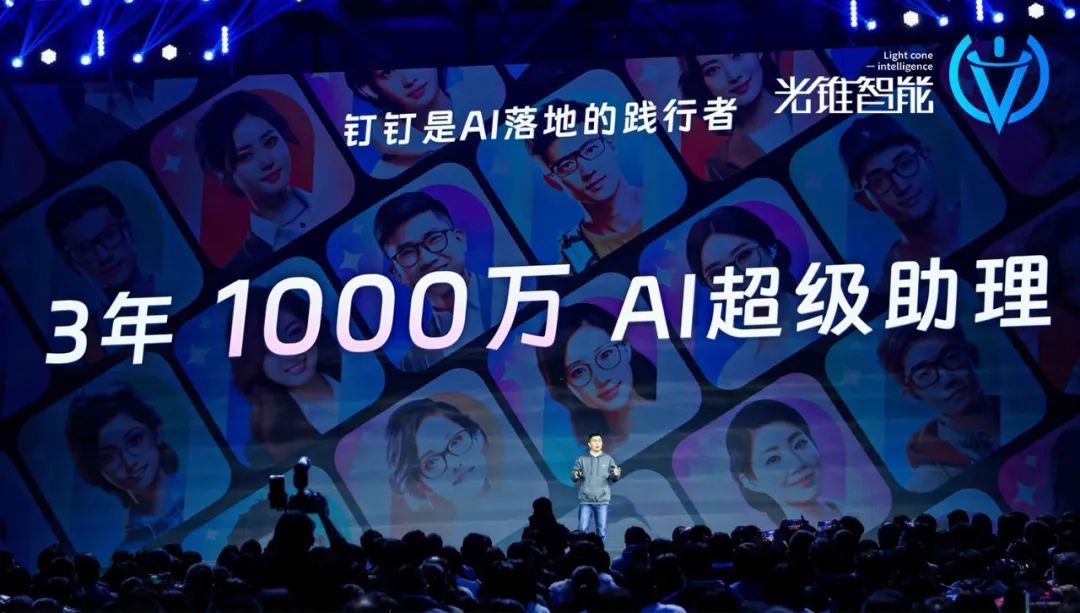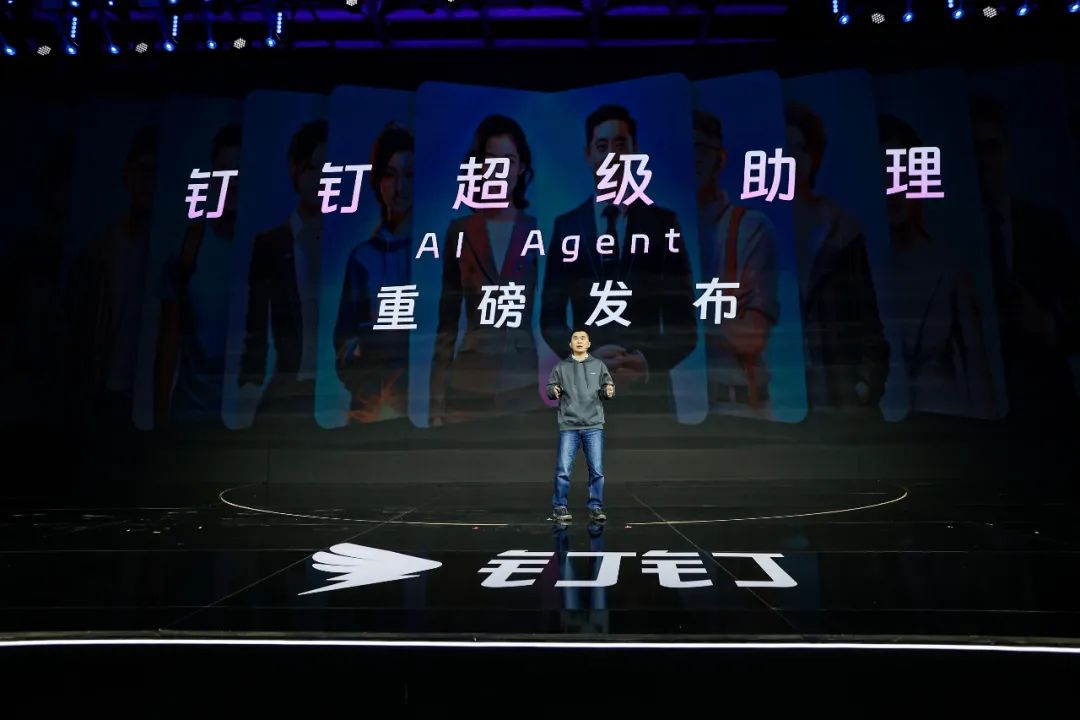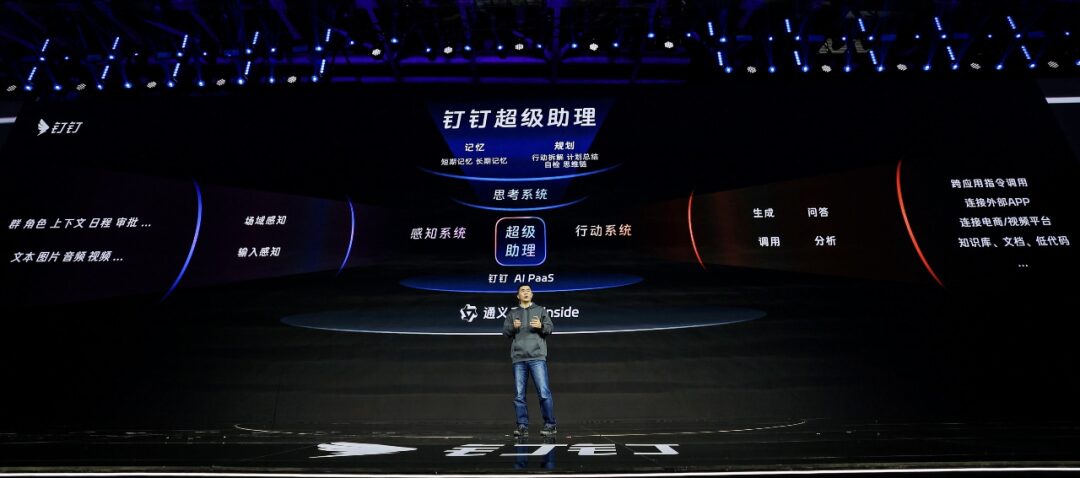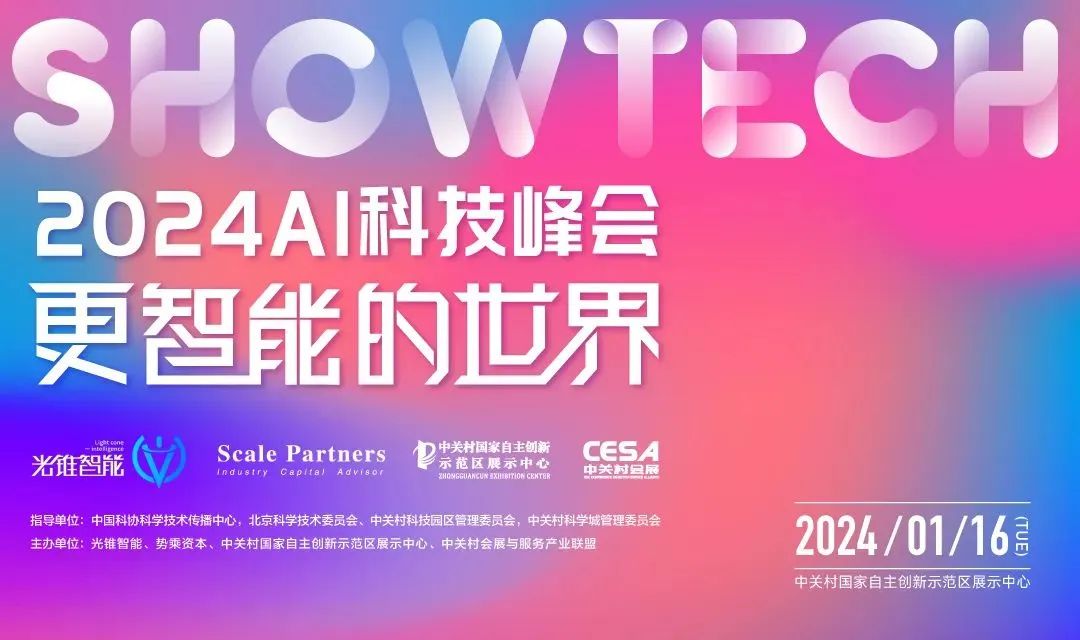Cutting-Edge Technology, Smart Economy

Written by|Hao Xin
“Big companies represent backward productivity, they are always a step behind,” and, “small innovations rely on large companies, while large innovations still depend on small companies.” This is the innovation rule summarized by veteran entrepreneurs represented by Li Yanhong and Wang Xiaochuan in 2023. From the experience of the mobile internet, this has almost become a consensus.
Therefore, when the 9-year-old DingTalk shares the spotlight with trendy terms like AI Agent, it is indeed somewhat surprising.
On January 9, at the “DingTalk, My Super Assistant” theme conference, DingTalk first revealed the answer: DingTalk 7.5 launched a brand new intelligent product—AI Assistant, realizing the landing of AI Agent. The DingTalk AI Assistant has perception, memory, planning, and action capabilities, as well as cross-application task execution capabilities, allowing seamless integration with third-party applications and self-built applications on DingTalk.
“DingTalk is transitioning from everyone being a developer to everyone being a super assistant creator,” said DingTalk President Ye Jun.
In the face of opportunities in the AI era, DingTalk continuously emphasizes an “entrepreneurial mindset.” Objectively, after becoming independent, DingTalk has gained more autonomy in organization, personnel, and strategy, making it more like a startup, which may be why DingTalk can quickly respond and pivot in the wave of AI.
AI Trendsetter, DingTalk Riding the AI Agent Wave
From the content of the conference, it is evident that DingTalk is walking on two legs, 2B is taking a professional route, while 2C is more down-to-earth.

For a long time, SaaS companies have been trapped in the dilemma of balancing lightness and depth. Although they have gradually extended towards PaaS to build barriers, they are also becoming heavier. The emergence of AI Agents breaks this deadlock. Amid voices claiming that “AI Agents are about to kill applications,” several directions for developing AI Agents have already emerged: one is the 2C Agent application direction represented by startup companies, focusing on entertainment, e-commerce, and marketing; another is the 2B service direction represented by established companies like Microsoft, providing services embedded in existing business systems; and a third is represented by OpenAI, which does not develop AI Agents itself but provides tools and platforms to attract users to build an AI Agent ecosystem.
Clearly, DingTalk wants them all. On-site, Ye Jun announced that DingTalk will launch an AI Assistant marketplace, aiming to become the most active platform for incubating, distributing, and trading AI assistants. “In the next three years, 10 million AI assistants will be created on DingTalk,” Ye Jun stated.
What gives them confidence? Looking back at the whole year of 2023, not just AI Agents, DingTalk has been riding the waves of every trend.
As early as last April, by integrating the Tongyi Qianwen large model, DingTalk began comprehensive intelligence transformation, completing the intelligent transformation of 17 product lines within 100 days. By the end of the year, DingTalk had integrated over 20+ product lines and 80 scenarios into the large model, completing intelligent reconstruction, becoming the first national-level work application in China to fully open up AI, with 700,000 companies genuinely using DingTalk AI.
In the past year, the world has gone through waves of MaaS, Microsoft Copilot, digital humans, and AI applications. Now, the gears continue to turn, arriving at AI Agents.
Maintaining a high-speed iteration pace on a seasonal basis, DingTalk has consistently kept pace with the technological frontier. Moving forward with an entrepreneurial mindset, DingTalk has maintained a high level of vigilance and agile iteration. In the AI era, results are certainly important, but courage is even more crucial.
PaaS Transformation in Three Years: Doing the Difficult but Right Thing
After communicating with several leading domestic AI Agent entrepreneurs, we learned that although OpenAI is far ahead in technology, there are still significant data bottlenecks. Essentially, due to safety or privacy concerns, companies are reluctant to authorize their specific data for external use, which deprives AI Agents of the “nourishment” needed for their most prominent learning, understanding, and transfer capabilities, let alone ecological linkage between applications.
However, this is precisely where DingTalk’s advantages lie. DingTalk has proposed an AI PaaS strategy, opening its digital foundation to enterprises and closely linking the ecosystem together, which in turn has brought more trust and support from users to DingTalk. Therefore, DingTalk is the most likely to connect enterprises, developers, and users through AI Agents, breaking down barriers between data, industries, and business scenarios.

DingTalk has been in a cycle of connection and ecology since the inception of AI Agents, becoming a new entry point connecting large models with users, enterprises, developers, and applications.
DingTalk: The Future Source of Productivity
OpenAI allows users to build Agents through custom GPTs, while DingTalk constructs them through AI assistants; OpenAI has opened all tools and the Assistant API to lower the construction threshold for developers and improve the efficiency of AI Agent implementation, while DingTalk aims to achieve similar goals based on its AI PaaS capabilities, opening model training platforms, model scheduling platforms, and plugin development platforms; in building application ecosystems, OpenAI plans to launch a “custom GPT store,” while DingTalk’s goal is to become an AI application market and intelligent assistant platform.
Firstly, there are numerous natural AI application scenarios on DingTalk. DingTalk’s reach has extended from personal workplace tools and enterprise organizational processes to the upstream and downstream of industries and supply chains, with every link having a demand to enhance productivity. Every industry is contemplating how to efficiently and cost-effectively transform using AI. Today, DingTalk is using AI Agents as a landing point to weave a network across various industries.
A large user base provides training data and lays the foundation for monetization. After a year of development in large models, a pattern has gradually emerged: the stronger the model becomes through training, the more agile the AI tools become with use. In the early stages, OpenAI achieved rapid iteration through a massive influx of users. Now, as AI Agent companies start from similar points, seizing the fleeting time window to enhance usage effectiveness and gain a competitive edge has become crucial.
The large user count also provides a broader space for commercial monetization. According to official DingTalk data, by the end of 2023, DingTalk’s user count reached 700 million, with 25 million enterprise organizations and 120,000 paid software enterprises.
Many are making products, but few can provide services. DingTalk has accumulated a wealth of 2B service experience, deeply understanding industry pain points and finding the boundaries of its role in serving customers. DingTalk has made it clear that it wants to focus on the most fundamental, business-agnostic, and general capabilities, while leaving the in-depth industry aspects that require Know How to partners, while also cultivating, supporting, and serving these companies. Value is generated in exchange, and it is this win-win cooperation model that can nurture and grow the AI Agent industry chain.
However, at present, the value released by AI Agents is just the tip of the iceberg. As a role in the early stages of technological development, their primary function is to assist humans. But in the future, the greatest value of AI Agents will lie in reshaping productivity relationships, first simplifying a workflow, then replacing a job or a company, and eventually integrating organizations and enterprises, allowing different enterprises and employees to be incorporated into a network through intelligent agents, transforming society into a vast network of virtual and real integration.
Furthermore, DingTalk will no longer just play a role as a platform and service but will transform into a source of productivity “spring water,” continuously generating AI Agents.
In the future, DingTalk will no longer output products or services, but rather a hard currency of productivity like gold and silver. Whatever type of productivity enterprises need, DingTalk can directly fill the gap through AI Agents, and even combine different types of AI Agents for packaged sales.
Thus, a grand blueprint for AI Agents has been unveiled, waiting for DingTalk’s every move in 2024 within this broad framework.

Guangzhou Intelligent “AI Exchange Group” has been established,
Interested friends can add the assistant WeChat (GZZN2019) to communicate and join the group.
Contact Us
For communication with the editor, please add WeChat: cishicike000
For business cooperation, please add WeChat: GZZN2019
For reprint inquiries, please leave a message or add WeChat: GZZN2019
※ When adding, please note Company + Name + Purpose
“Previous Highlights”
AI Chip Manufacturers | Integrated Storage and Computing | Storage Industry | Xinchuang Strategy | 2022 Smart Vehicle Review (Part 1) | 2022 Smart Vehicle Review (Part 2) | Chemical Batteries | AI Robots | Carbon Neutrality | Low Code/No Code | VR/AR | Domestic Databases | Carbon Neutral Hydrogen Energy | Collaborative Office | RISC-V Chips
AI Explosion:
Dialogue with Baichuan Intelligence’s Wang Xiaochuan|Intelligent BI|OpenAI|Baichuan vs. Zhichu|City Large Models | Quark Large Models| Silicon Valley AI Financing| Digital Humans | Consumer IoT | JD’s Large Models |Tencent CloudMaaS| World Artificial Intelligence Conference | Alibaba Cloud | ChatGPT | AI Merger Wave | Cloud Knowledge Voice Mountain Sea Large Models | Model Security | Large Model Entrepreneurship | Domestic Large Models |BaiduWenxin Yiyan | Generative AI | Volcano Ark | AI Interviews | 360 Large Models |
“Eastern Data Western Computing” | Computing Power Revolution | Huawei Ascend | Cloud Vendors | Cloud Database | Alibaba Cloud Computing Power | Amazon Cloud | Huawei Cloud | Cloud Intelligence Integration | Cloud Storage | Cloud Native Data Warehouse | Cloud Giants Low Code | Microsoft Cloud | Cloud Native | Automotive Cloud
Automotive Intelligence:
Smart Chassis|L3 Autonomous Driving|2023 Smart Vehicles This Year|Zeekr| Shanghai Auto Show|Hesai Technology IPO|Port Autonomous Driving|Leap Motor IPO|Qualcomm| Hongjing Intelligent Driving| WM Motor IPO| Xiaomi Car Manufacturing| Automakers Self-Developing Autonomous Driving | Autonomous Driving Golden Turning Point | High-Precision Maps | Driverless Heavy Trucks | Flying Cars | Hongjing Intelligent Driving | Silicon Valley Star Driverless Car Wayoo | Driverless Buses
Digital Intelligence Cases:
Financial Database | Security Chips | Domestic GPUs | Ten Years of Chinese Chip Investment | Apple Chips | Qualcomm | Apple WWDC2022 | NVIDIA | High-Tech Data Aggregation | Cainiao | Winshang Technology | Retail Industry Digital Transformation
Submissions, Reprints,
Business Cooperation, Job Applications
Please add the assistant

More Exciting Content
Follow Business Data Dispatch